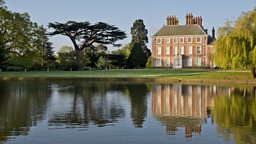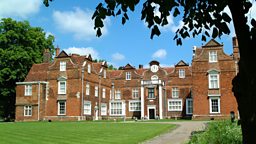Stranger On The Shore. By Acker Bilk.
It seem topical and not hard to imagine
the title of this tune in today's Isolated climate of May 2020.
Being born into a slum clearance
terrace house that was not deemed fit for habitation, as a family we
got moved to a modern council estate on the outskirts of Liverpool.
Times were hard there was no money
around and the decline of the docks saw a demise of industry due to
the geographical change and containerization.
In this very poor climate it would be
easy to fall in to all the traps around me.
During the 1970's times were really
tough but I got myself out and worked. Firstly as a milk lad helping
deliver milk on our estate for 15p a day. I saved up.
Then I got a job as a paper lad and was
able to earn a little money.
All my well earned money went on
clothes, as my parents could not afford a lot....and fishing tackle.
Discovering fishing was a lifesaver for
me. I joined a newly formed club on the estate and we would go off to
these amazing locations in the countryside, of a Sunday, mostly, in
North Wales.
I can recall the first glistening Perch
I caught on a freezing Sunday morn. It was magical. It was small.
And the fact that it jumped on my hook didn't matter.
I had caught a fish.
I had caught a fish.
The excitement of hunting these monster
fish we never caught was enthralling.
It was my escape. Some of the kids at
school called me Findus or Captain Haddock but I did not care. It was
they who did not understand. Many of them would get into serious
trouble. While I stayed out of it.
I asked my parents for a radio for
Christmas and a small leather cased portable radio that took a single
9V battery was found wrapped up on Christmas day.
It seems hard to imagine in this day
and age, how something as simple as having your own pocket radio
could change your life but it did. I carried it everywhere.
Listening and learning. Searching for
the limited number of stations that would introduce me to new music.
During the course fishing closed season
we charrabanged on our old fashioned smiley faced coach up to The
lake district. The coach doubled up as a meeting place during the
week, a sort of youth club.
It took hours of motorway.
Then around a corner as if landing on another planet there it was, The Lake. The excitement of seeing Ullswater lake, several miles long simmering in the beautiful luscious green land still lives with me today.
It took hours of motorway.
Then around a corner as if landing on another planet there it was, The Lake. The excitement of seeing Ullswater lake, several miles long simmering in the beautiful luscious green land still lives with me today.
Me and my fishing friend got off the
coach we would be picked up early evening for the journey home. For a
day we were free. Fishing we went.
It may have been the wrong spot we
seemed to be on a shallow gravel shingle and the ledge for the lake
drop off was so far out that there was not even enough line on my
reel with which to cast out far enough.This was a bad spot.

I was 300 yards away from the bank. In 15 inches of water.
I took out of my pocket, my box, of tanlged worms and baited up, on a size 14 spade end hook, casting comfortably over the shelf and hopefully into the range of some monster trout.
I turned around and I was so far from
the bank amidst the shimmering silver glade of water. I felt as if I
was floating on silver ice. All around me was calm. The beauty moved
me, and to this day I can remember the rolling hills foreshadowing
that crystal mass of becalmed lake. There was no wind. It was
beautiful. I felt safe and calm and alone. The silence of the lake
deafened me with its majesty.
I took out my coat pocket my radio and
tuned it into the only channel I could pick up. Crackling away I
finally balanced it in and on the radio as if by magic came the
beautiful sound of....... Stranger On The Shore.
I had heard it before but today the
beautiful clarinet solo hit me like a log, and as I looked around
here I was.
The Stranger On The Shore.
It was very emotional. I may have shed
a tear as I sat there looking around me at the sheer beauty of the
place. It was a shimmering surreal experience that I have never
forgotten.
The most beautiful isolation of my
life.
Away from it all, free of everything in
the wilderness of the deep. I was floating on air, or walking on
water.
In no time the beautiful tone filtered
away and I was forever moved in stillness.
Until my rod tipped and up from the
deep cane a two pound eel.
This was the worst place you could wish
to catch this slithering slimy half fish half snake, that you can
never grab properly.
And all the time it wants to bite you.
And all the time it wants to bite you.
We were always scared of eels for some
reason they would wrap around your arm like an Anaconda. I didn't want
to catch them.
Getting it back to the bank after the cold water slowly slipped over the top of my boots could have easily ruined my day but at least it was a fish caught in the fishing competition of life.
Getting it back to the bank after the cold water slowly slipped over the top of my boots could have easily ruined my day but at least it was a fish caught in the fishing competition of life.
It took me an age to unhook the
wriggling slithering monster.
That song has never left me and even
through my musical journey into Reggae, Soul, Punk, Joy Division and
many other genre's I would always have to pause to have my soul
pierced by the beauty of this old fashioned song that never left my
heart.
It was something you didn't admit to
when your mates were buying Sex Pistols records called Never Mind The
B****cks, but I still recalled that day every time it was heard it.
Twenty five years later at a massive
street market in Lille, by now I seem to have escaped all those
beartraps of life and I am a antique dealer. With a shop in a arcade
that Pevsner the architectural historian described as making
Burlington Arcade in London, look pedestrian.
There staring at me on the floor
amongst a load of junk is a shiny black ebony and silver keyed
......clarinet.
A beautiful instrument, and it seemed
to call me. I went over and picked it up and asked the price which
was the equivalent of £50. It was old, but I bought it for £35 or
the equivalent in Francs.
It was like as if it called out to me.
Buy me. As if I got a clarion call.
As if I remembered the tune I grew up
with. That old fashioned tune by Acker Bilk who had become a
caricature of trad jazz, even though my favorite song was without
definition, it was part of that era.
It was a beautiful tune.
Now coming from that council estate in
Liverpool and not having an education I have had to use my brains,
and my brain is telling me,
“You can't play a note, don't even
begin” So I ignored my own advice and showed it to a bloke who
come in the shop.
“Have you got a reed for it” he
said
“What” I replied.
Ignorant to anything about it. He
brought a reed in the next day and clipped it into the mouthpiece. By
chance he was an old trad jazzer.
“Can you play Stranger On The Shore”
I said.
He did. It was as surreal as my early
experience. I wanted to learn it.
I developed a way of writing down the
notes by sketching on paper the holes of the clarinet and coloring in the
ones that my fingers would close. To form a note.
I soon realized that the note C was,
three colored in dots, and D was two. Six was low G and all open was
the G in the octave above.
It was like learning a new language.
But I like a challenge.
And so began the longest journey of my
life. Having no musical experience whatso-ever. At forty years of age. I decided I was going to take up the clarinet.
Learning to read from the stave was a
long and lonely task. You can't buy it. you have to keep on keeping
on. Barrier after barrier was broken down until I could read a basic
tune.
I felt that my fingers needed breaking and resetting again as they had formed, not as a musician at all, at all.
I felt that my fingers needed breaking and resetting again as they had formed, not as a musician at all, at all.
Every day I worked an hour at least for
years. I learnt the tune I heard as a child and it was an achievement
like nothing else I had done before.
I was now a musician of sorts. Formed a band even. wrote out scores.
I stopped and thought one day why do
you like that old fashioned tune so much?
I learnt that when I was still a baby, it was the theme tune to a series on BBC. It was written
by Acker Bilk and named after his daughter Jenny shortly after she was born.
He gifted her all the royalties. It went to no One in America and no two in Britain. And in May 1969 the crew of Apollo 10 took it with them, into their own isolation, to the moon. It was played at the funeral of a dear friend who knew I played it.
I have often seen Acker Bilk on TV in daft hats and striped waistcoats , in old films with names like Its Trad Dad or similar, man he could play.
I have often seen Acker Bilk on TV in daft hats and striped waistcoats , in old films with names like Its Trad Dad or similar, man he could play.
 I learnt it was the second longest running record in the charts, ever, or the hit parade as it used to be
called.
I learnt it was the second longest running record in the charts, ever, or the hit parade as it used to be
called.Fifty two weeks in continuity. It made number two.
It wasn't just me that liked it. They played The Cavern Club.
Then The Beatles came along and it all
changed.
But you cant keep a beautiful tune down and here I am several decades later still talking about it.
But you cant keep a beautiful tune down and here I am several decades later still talking about it.
I was honored to have been invited to
join The Antiques Roadshow team in 2015 and its fair to say I kept
myself away from all those traps that lurked in wait.
I educated myself but it was all due to
a work ethic to aquire my fishing tackle, and the need to get out of town, to
be, even just for a few hours, that Stranger On The Shore.
In these difficult times with everyone
in lockdown, I can put my licquorice stick together and play....from
memory......Stranger On The Shore.
That I learnt by dots.
And I am transferred back to the
Cumbrian lakes, in isolation, on a shingle shore, without a care.
And today as I play, several decades
later a tear slips down my cheek, again.





























